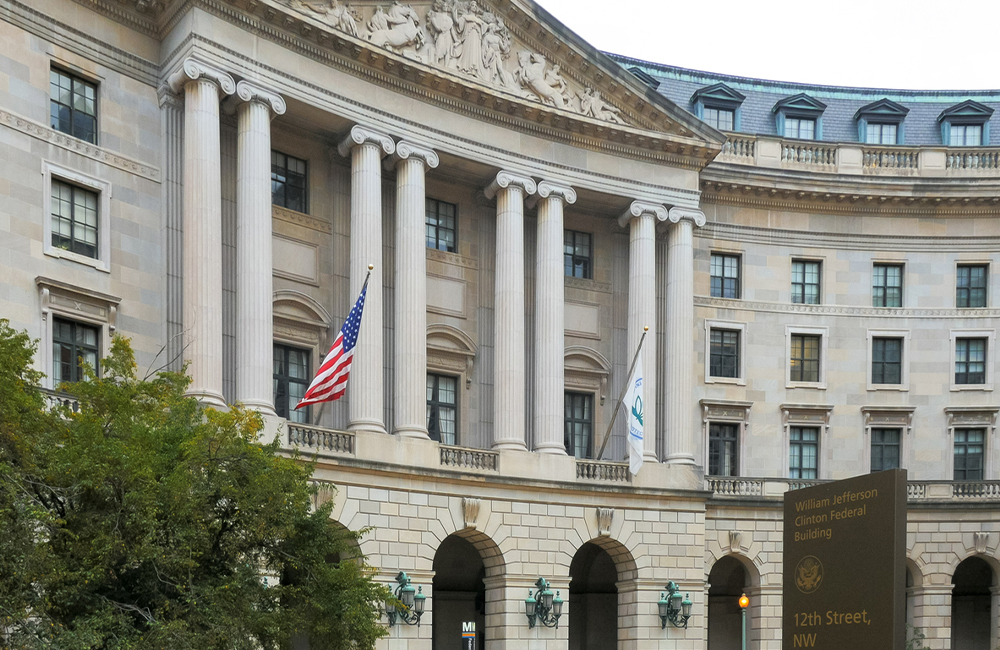White House Proposes Record EPA Funding to Tackle Climate Crisis, Environmental Justice
The budget includes a $2.3 billion increase in funding for the agency.

President Biden’s fiscal year 2023 budget requests $11.88 billion for the Environmental Protection Agency (EPA) to tackle the climate crisis, deliver on environmental justice and equity, reduce air and water pollution, and rebuild core functions at the agency.
The proposed budget is about $2.3 billion higher than the $9.56 billion Congress authorized for FY22 and reflects Biden’s Justice40 commitment, which dedicates 40% of federal investments in climate and clean energy to benefit underserved communities.
$4 billion of the EPA’s proposed budget is allocated for upgrading drinking water and wastewater infrastructure nationwide, an increase of $1 billion over the 2021 enacted level. $1 billion of this would go toward fully funding the Drinking Water and Wastewater Infrastructure Act’s water grant programs.
“Although progress has been made, many still lack access to healthy water, face inadequate wastewater infrastructure, and suffer the long-term effects of exposure to lead pipes,” EPA Administrator Michael Regan said in a hearing before the Senate Committee on Environment and Public Works. “America’s water systems are also facing new challenges, including cybersecurity threats, climate change and emerging contaminants like PFAS (per- and polyfluoroalkyl substances).”
The EPA’s proposed budget also looks toward improving air quality, with $1.1 billion allocated to reduce pollution and radiation exposure. This includes $152 million to develop and implement national standards for vehicle, engine and fuel emissions and $299 million to establish standards for reducing air toxins.
“Across the country, poor air quality affects millions of people perpetuating harmful health and economic impacts,” Regan said. “In fiscal year 2023, the agency will protect our air quality by cutting emissions of ozone-forming pollutants, particulate matter and air taxes. The president’s budget includes $1.1 billion to improve air quality and set standards that reduce pollution from both mobile and stationary sources. EPA’s work to set these standards provides certainty to industry, builds on advances in technology, and reinforces market movement toward a cleaner energy system that provides reliable and affordable energy.”
The EPA is also responsible for preventing and addressing hazardous waste and environmental damage. The budget request would provide $1.15 billion for EPA’s Superfund programs to clean up contaminated land and respond to environmental emergencies, as well as $215 million for EPA’s Brownfields program to help communities recover and reuse contaminated properties.
The budget would provide a further $124 million and 449 full-time equivalents (FTEs) for Toxic Substances and Control Act (TSCA) implementation. $126 million would be dedicated to studying the health and ecological effects of PFAS contaminants, restricting their use and cleaning up PFAS pollution.
To help address the climate crisis, the budget would invest $100 million in grants to support local efforts to reduce greenhouse gas emissions. Compared to 2021 enacted levels, the White House proposes an additional $35 million to implement the American Innovation and Manufacturing Act and continue phasing out hydrofluorocarbons (HFCs), a potent greenhouse gas. The White House also raised the wildfire prevention and readiness allocation by $13 million, aimed at improving the EPA’s ability to forecast and communicate smoke events.
The White House also allocated funding toward the enforcement of environmental laws. The budget would provide $213 million for civil enforcement for instances of illegal pollution and includes increased funding for compliance programs, monitoring efforts and inspection programs. $69 million would go toward criminal enforcement efforts, including the EPA’s partnership with the Department of Justice to develop a specialized criminal enforcement task force to address environmental justice issues.
“The community’s hit hardest by pollution and climate change are most often communities of color, indigenous communities, rural communities and economically disadvantaged communities,” Regan said. “For generations, many of these vulnerable communities have been overburdened with higher instances of polluted air, water and land. This inequity of environmental protection is not just an environmental justice issue, but it’s a civil rights concern as well. For fiscal year 2023, EPA will expand upon the holistic investments made by environmental justice and civil rights to reduce the historically disproportionate health impacts of pollution in communities with environmental justice concerns. Across the budget EPA’s invested more than $1.4 billion to advance environmental justice, clean up legacy pollution and create good paying jobs while in the process.”
The EPA has proposed a new national environmental justice office to coordinate the agency’s programs for underserved communities and maximize their impact. Following staffing reductions under the previous administration, the new budget also adds more than 1,900 new FTEs to build EPA’s capacity to protect human health and the environment.
This is a carousel with manually rotating slides. Use Next and Previous buttons to navigate or jump to a slide with the slide dots
-

Energy Researchers Aim For Holistic Approach to AI Issues
A new center at the Oak Ridge National Laboratory is looking at under-researched areas of AI to better understand how to secure it.
2m read -

How Agencies are Upskilling the Workforce in AI
Federal officials are putting in place new training and education methods to ensure its overall workforce understands the technology.
3m read -

Building Better Data Governance Across FDA
The agency is using emerging technology to tackle its data challenges.
19m listen -

A Prepared Workforce is Key to Cyber Resiliency
Strong training strategies and emphasizing cyber hygiene basics enhance security practices at federal agencies.
2m read




